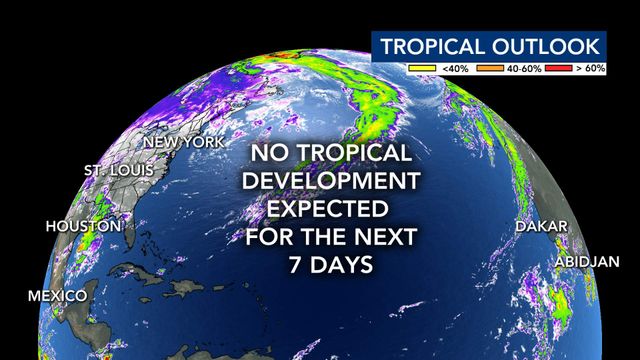Tracking the tropics 2023: Your source for hurricane and tropical storm watch updates
The WRAL Severe Weather Center is tracking the tropics to help you and your family be ready for any scenario.
Posted — UpdatedTracking the tropics 2023 | Your source for hurricane and tropical storm watch updates
Staying ahead of current tropical storms and hurricanes is crucial. Not only do you have to be prepared for any damage that might occur, but you mentally and physically need to be ready for whatever happens next. Staying ahead of the curve means knowing every upcoming storm and how it is tracking.
The WRAL Severe Weather Center is tracking the tropics to help you and your family be ready for any scenario.
Is there anything in the tropics right now?
WRAL meteorologists on Sunday said no new development is expected in the next seven days. Thursday marks the end of the 2023 Atlantic hurricane season.
This season had 20 storms overall and 19 named storms, which is the fourth-highest total since 1950.
This year, Tropical Storm Ophelia was the only storm to make landfall in North Carolina. On Sept. 23, it made landfall at Emerald Isle with wind speeds of 70 mph.
The Atlantic hurricane season runs each year from June 1 to Nov. 30. The most active time is usually September through November, but it's possible to see a hurricane make landfall any time of the year.
North Carolina has never had a category 5 hurricane make landfall. The state's strongest hurricane to make landfall was Hurricane Hazel in 1954, which was a category 4 hurricane.
How to prepare for hurricane season
Worst hurricanes in North Carolina history
Related Topics
• Credits
Copyright 2024 by Capitol Broadcasting Company. All rights reserved. This material may not be published, broadcast, rewritten or redistributed.






